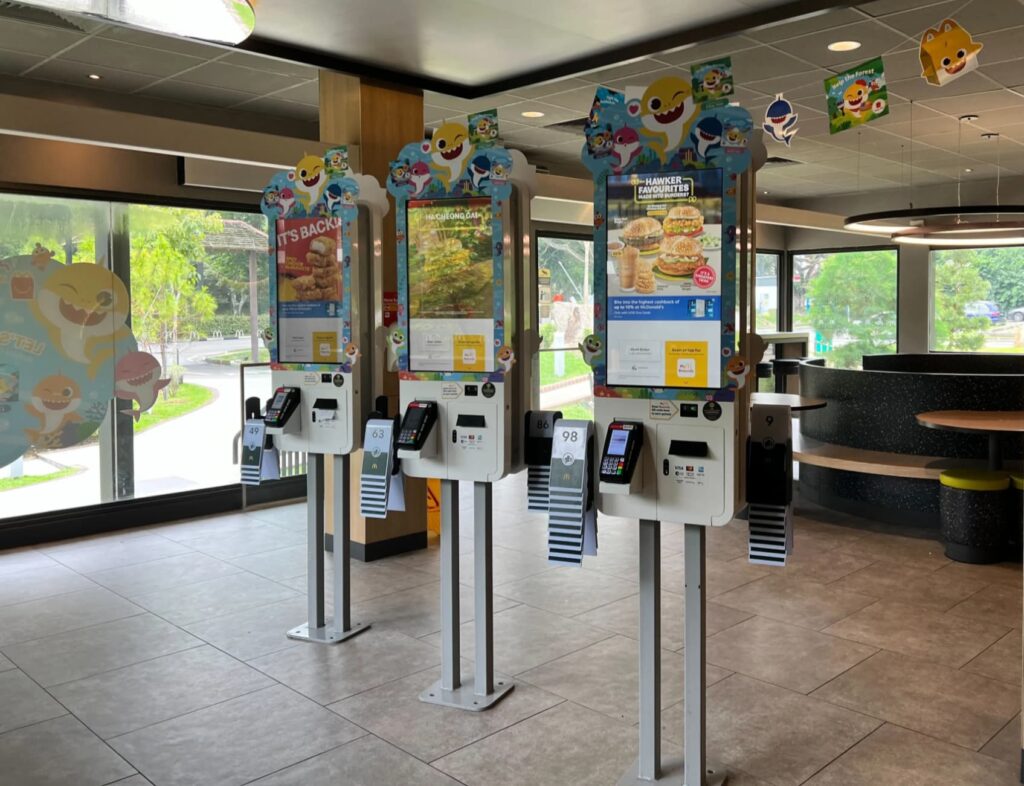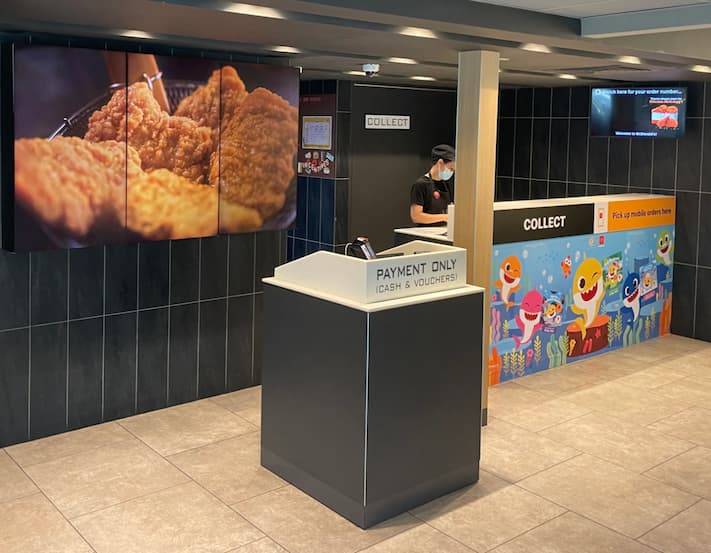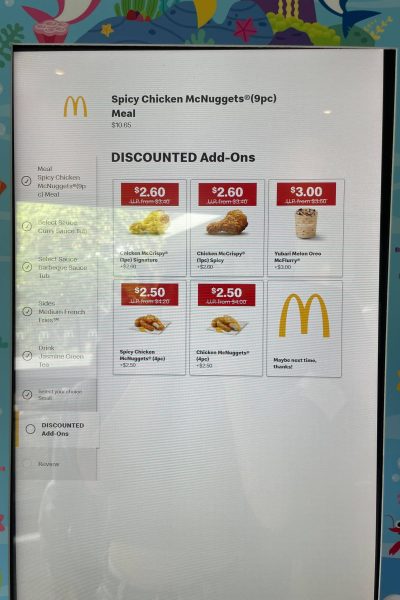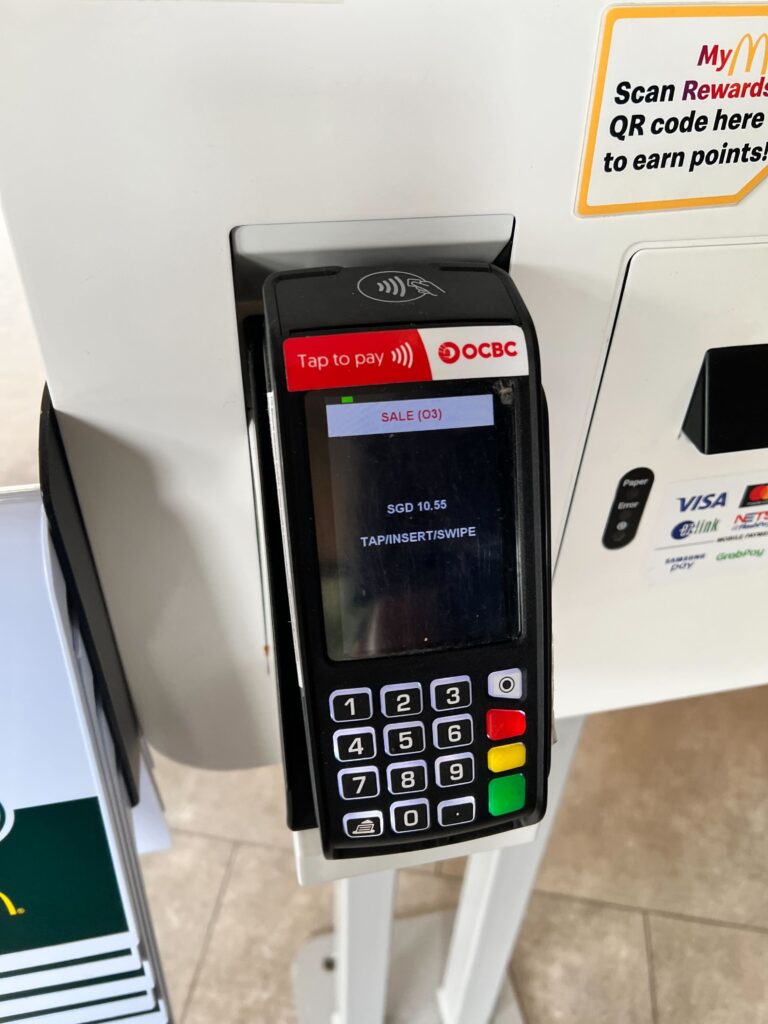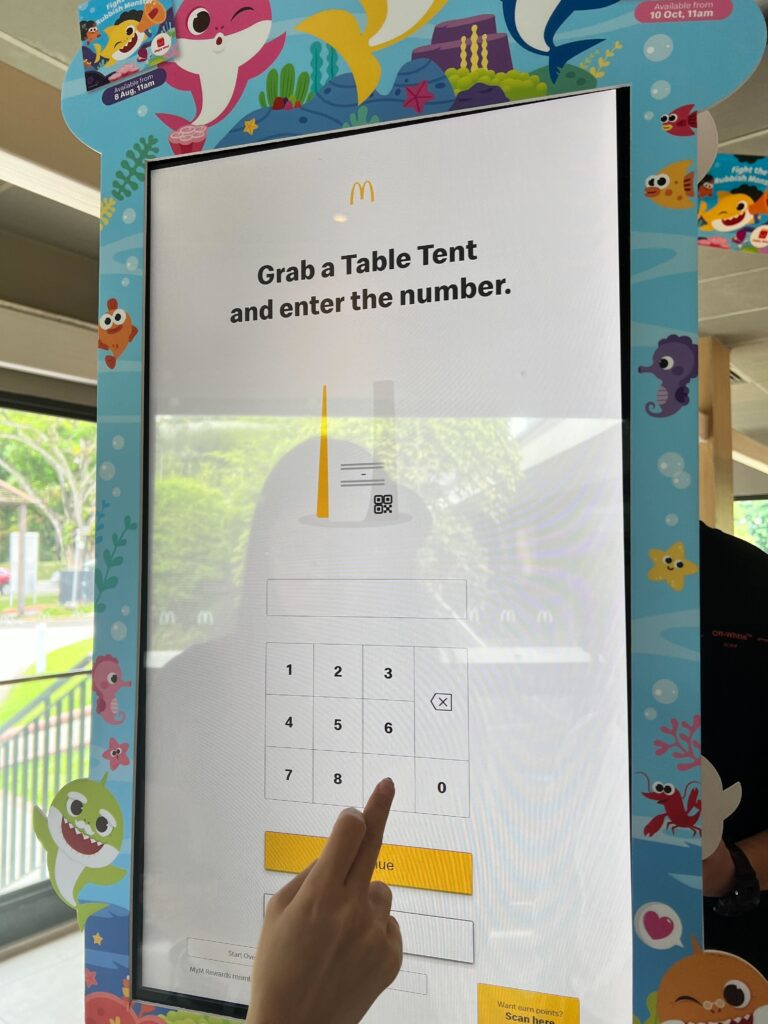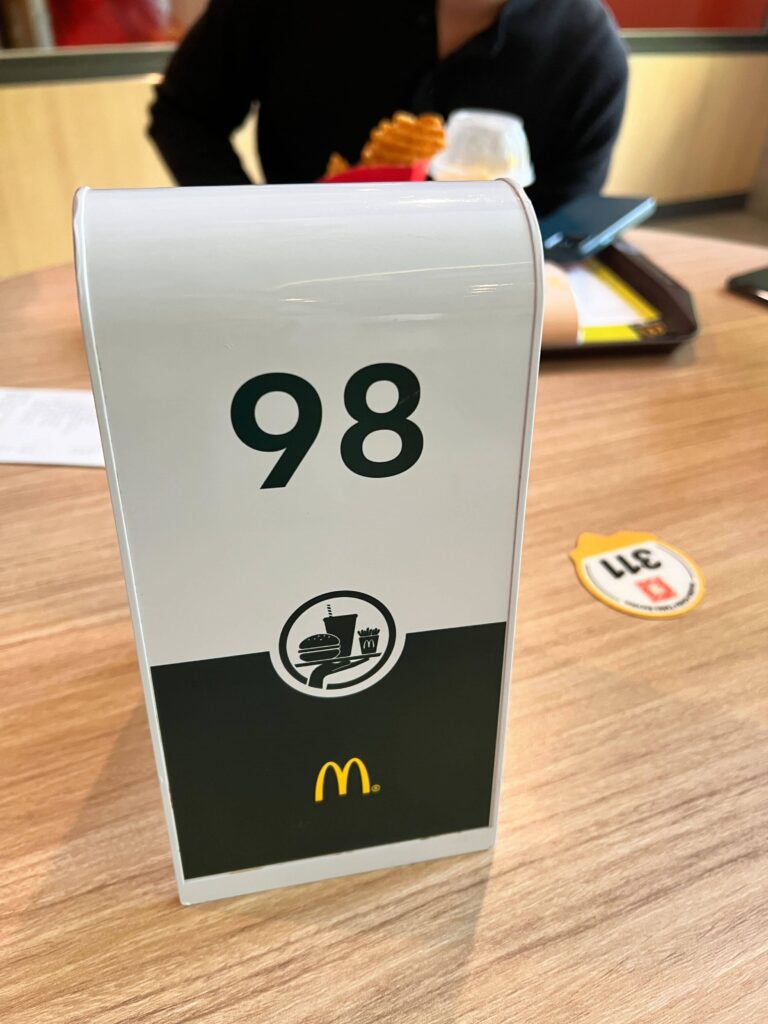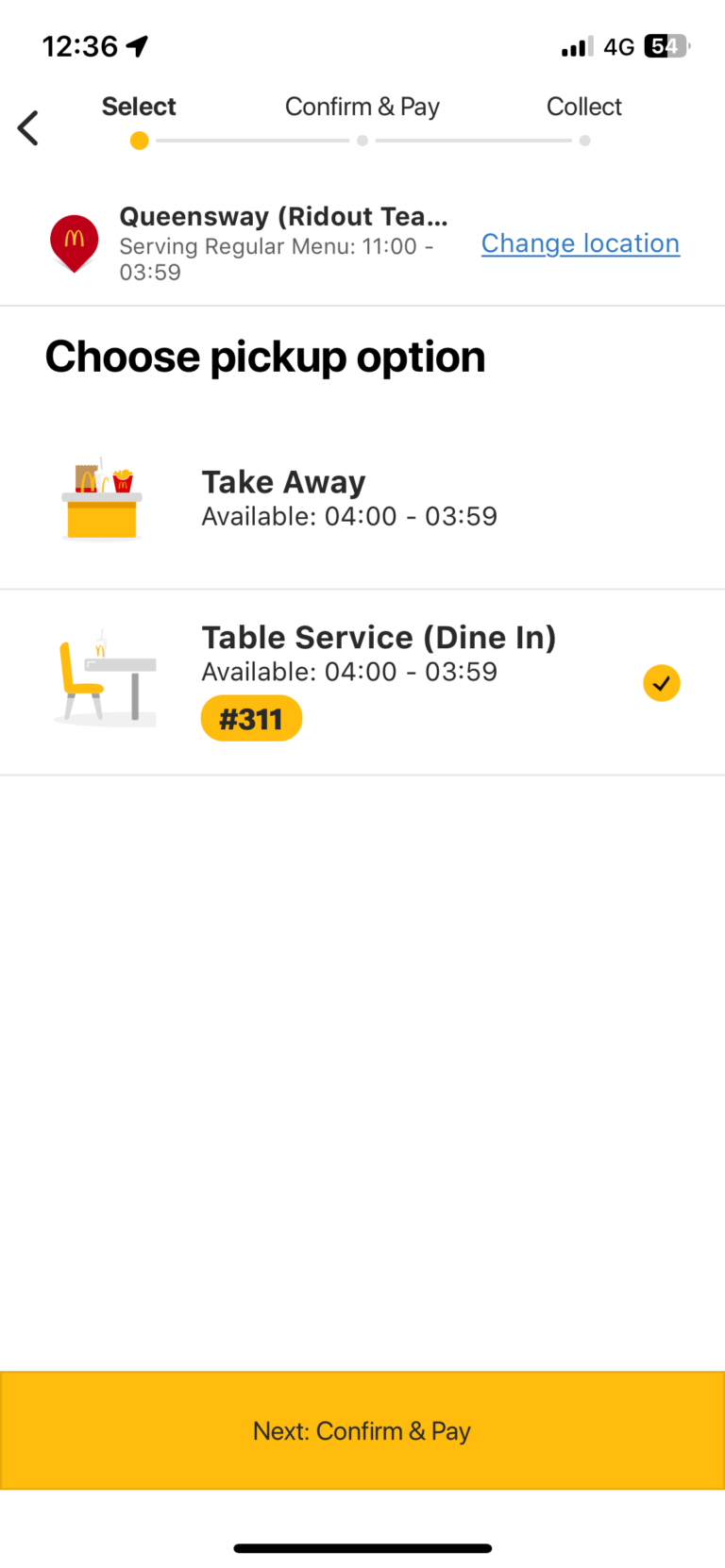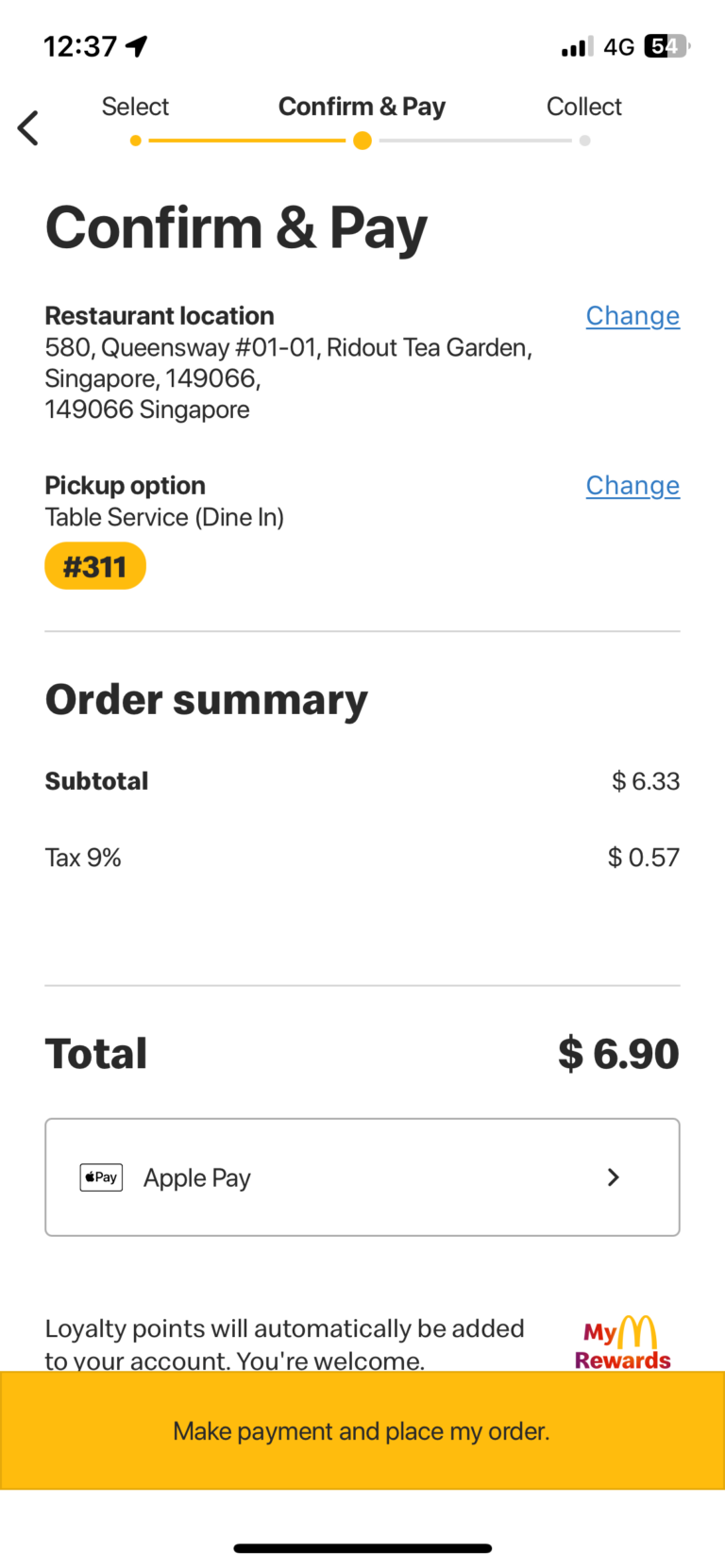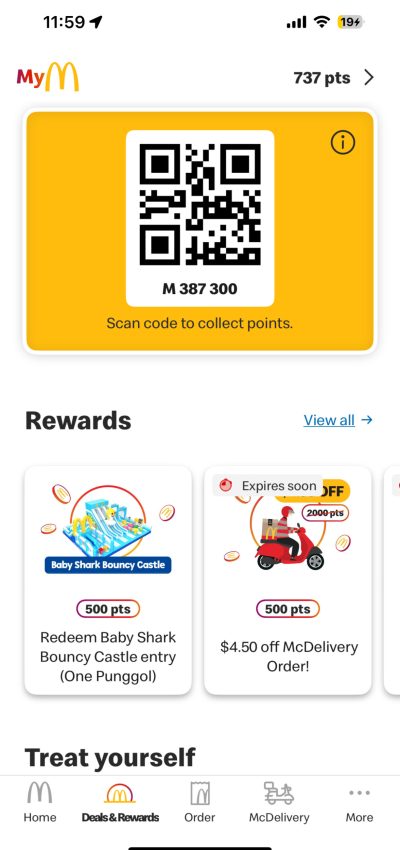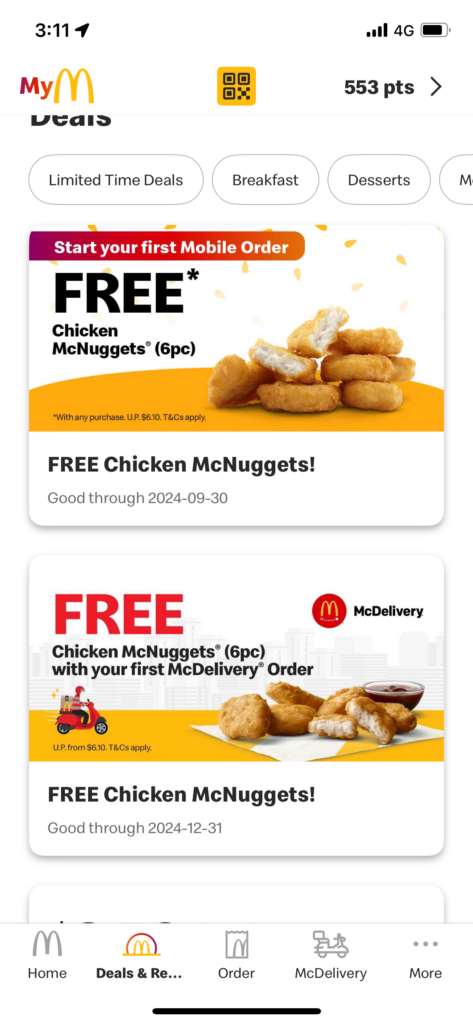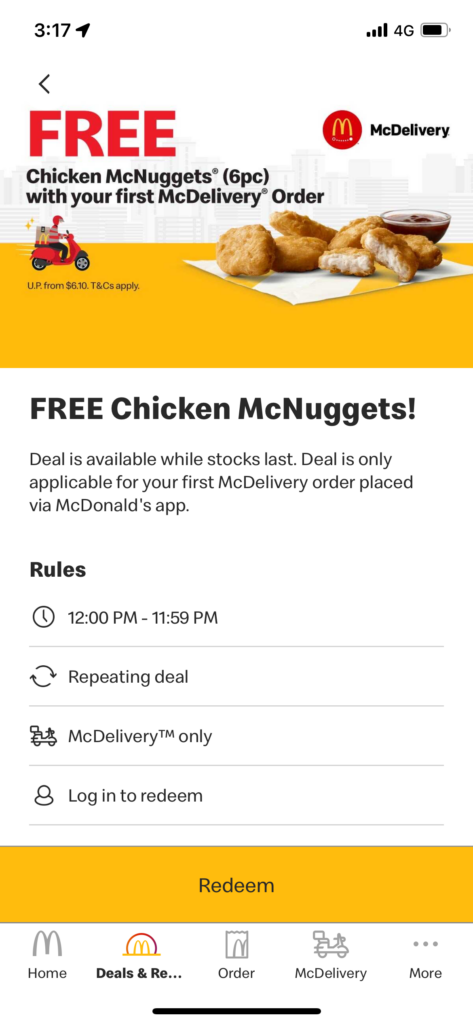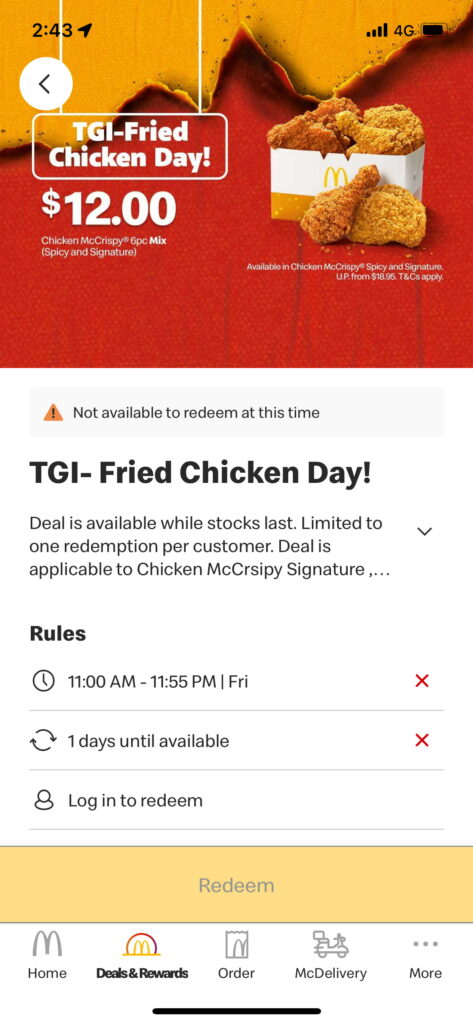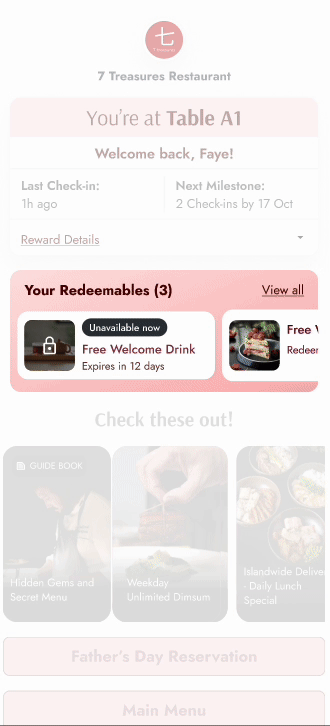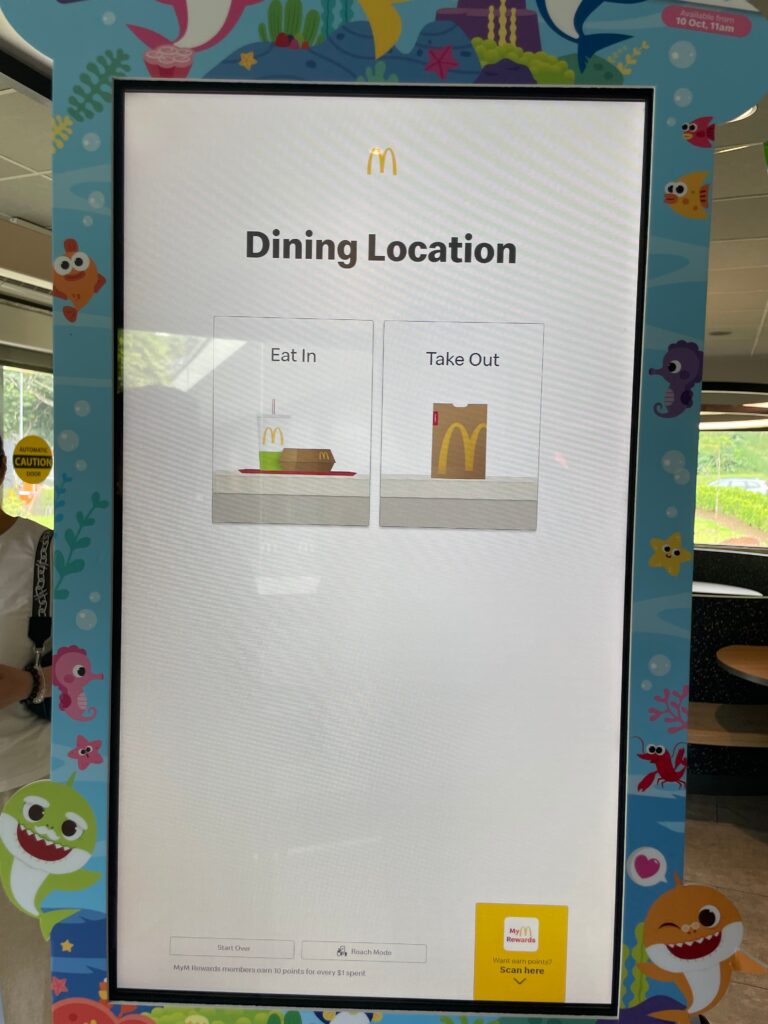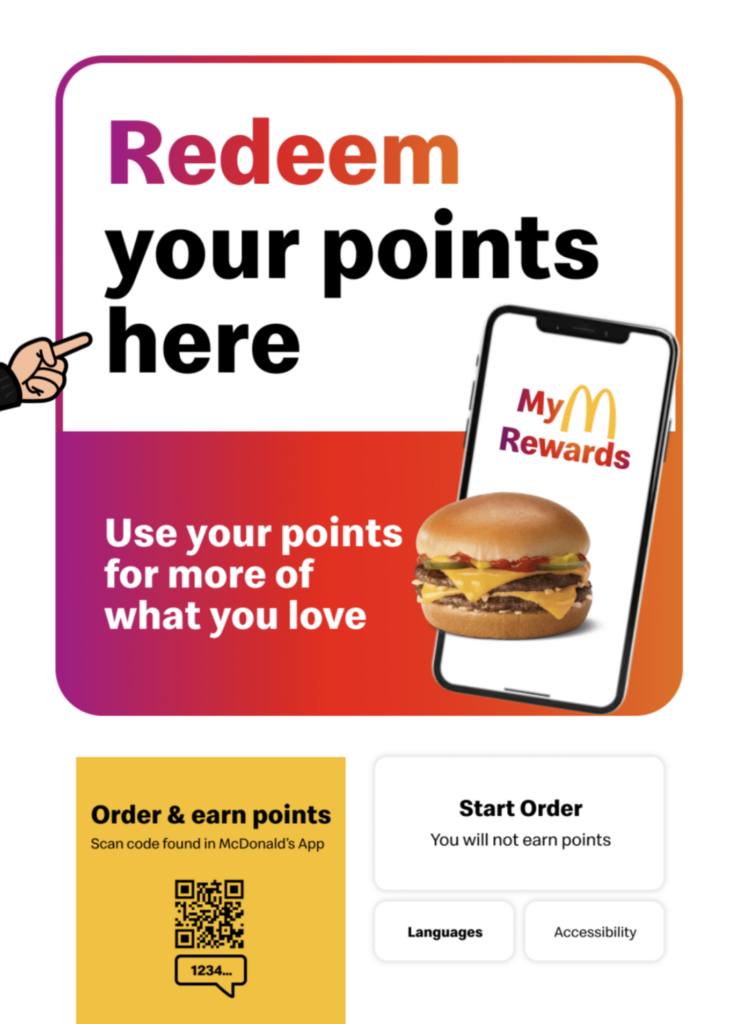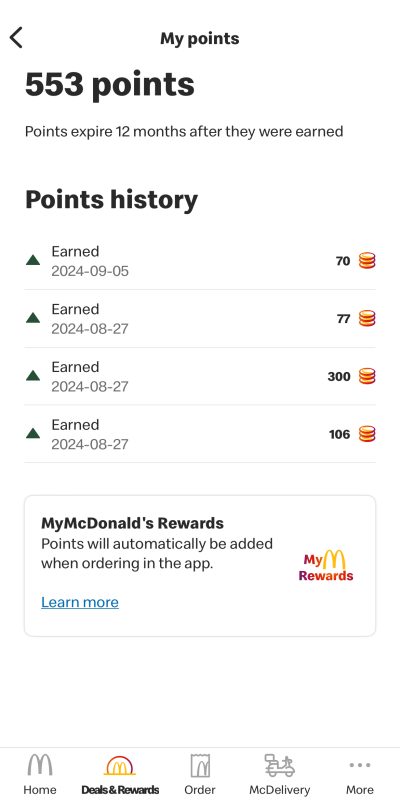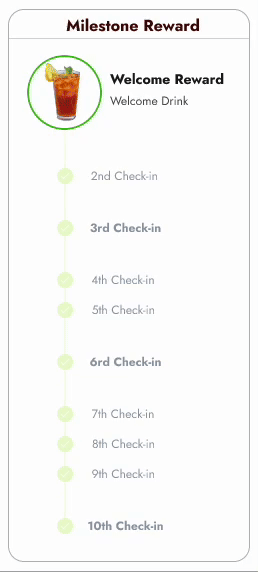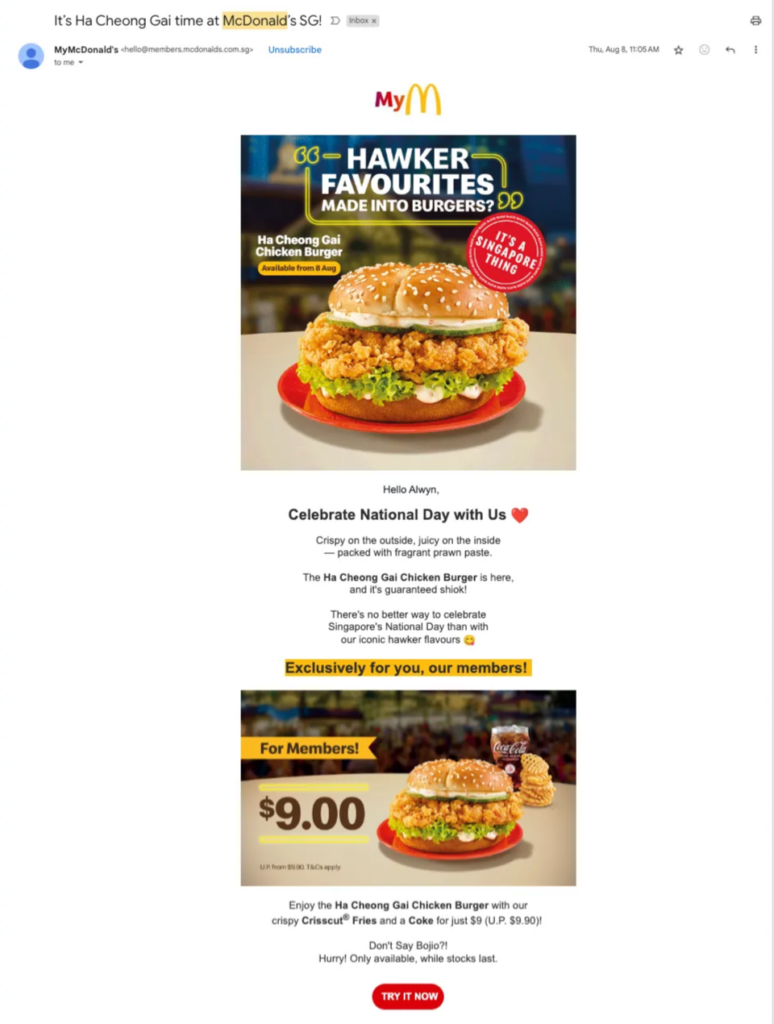Introduction to the Byte to Bite Series
Welcome to another edition of Byte to Bites, where we break down the digital dining experience at your favourite restaurants and offer practical takeaways for enhancing your own customer experience. Today, we dive into McDonald’s Singapore – from self-service kiosks to a points-based loyalty program, McDonald’s digital transformation offers valuable lessons for restaurateurs looking to elevate their own customer experience.
So grab your fries, and let’s dive in!
About McDonalds Singapore
McDonald’s has long been a pioneer in the fast food industry, beloved for its iconic burgers, fries, and its efficient, no-fuss fast-food experience. As consumer preferences evolve, so too has McDonald’s, adopting cutting-edge technology to streamline its operations and engage customers more effectively.
In this review, we take a closer look at McDonald’s ordering systems, including their kiosk and table ordering experience, and their loyalty program. Our team visited the beautiful Tea Garden branch for lunch on a weekday to see how they fared.
Overall Verdict
- Digital Engagement – 3/5
- Digital Integration – 5/5
- Personalisation – 2/5
- Customer Delight Factors – 3/5
- Follow-Up Engagement – 3/5
- Data Utilisation – 3/5
👍🏻 Ordering Experience
Kiosk Service
If you’ve been to a McDonald’s recently (and let’s be real, who hasn’t?), you’ve probably noticed their self-order kiosks. These sleek, touchscreen stations let you skip the line, customise your burger just the way you like it, and pay right there without speaking to anyone.
Kiosks are prominently located at the entrance of each outlet.
Only one cashier station, encouraging customers to use the kiosks to order.
The ordering experience is simple: select whether you’re dining in or taking away, browse the menu, add items to your cart, and proceed to payment. Before checkout, McDonald’s smartly introduces upselling opportunities, suggesting discounted sides or additional items at just the right moment. This not only boosts the average basket size but also feels like a natural part of the ordering process.
Discounted items are highlighted in red to grab your attention.
After checking out, you’ll proceed to payment where all popular payment methods are supported. After paying, you’ll need to select your pickup options. Either via the counter or using a table tent, allowing the staff to deliver your meal directly to your table with the tent—seamless and efficient.
Supports popular payment methods.
Decide how you want your food to be delivered.
Place tent on your table & staff will delivery your food.
The kiosks essentially replace the need for staff to take orders and payments, reducing operational costs and freeing up team members to focus on other areas of service. Nearly three-quarters (73%) of respondents in an Annual Connected Retailer Survey conducted by SOTI were in favour of self-service technologies to improve the shopping experience and reduce staff interactions. As consumers’ preferences change, many quick-service restaurants have also introduced self-ordering kiosks.
While the kiosks generally work well for fast service, we experienced some hiccups with the kiosk itself: unresponsive screens required multiple taps, and when it came to redeeming rewards, the process was confusing, which we’ll be elaborating on this in the Redemption process below. During busy times, we noticed potential bottlenecks forming as customers waited to use them. If crowds grow and frustration increases, many may default back to traditional counter service, negating the efficiency gains McDonald’s aims for.
Table Service Ordering
If you’re dining in, McDonald’s offers a convenient way to order right from your seat. Simply scan the QR code at your table, and you’ll be prompted to download the McDonald’s app.
Call to action to scan the QR code found on your table.
From the app, you can select whether you want takeaway or table service—just make sure your table number is correct, and you’re good to go. Payment is seamless, too. You can confirm and pay directly through the app via your preferred mobile payment method, all without needing a physical payment terminal. After confirming your order, you can track its status in real time, so you know exactly when your meal is on its way.
Decide pickup options, indicating which table you are ordering for.
Select the items you want to order, follows the kiosk checkout flow
Pay directly from your mobile.
Clearly shows the order status in real time.
The beauty of this setup is that you don’t need to wait in line or even leave your table. As soon as you sit down, you can order and relax while your food is brought straight to you—talk about convenience! This system, like the kiosks, helps reduce the need for staff to handle orders and payments, which not only cuts down on operational costs but also allows employees to focus on improving the overall dining experience.
👍🏻 Points Based Loyalty Programme
Now let’s talk loyalty. McDonald’s has their MyM Rewards program, which is a classic points-based system. For every SGD $1 spent, customers earn 10 points, which are accumulated through the McDonald’s app. These points can later be redeemed for menu items like fries, sundaes, or even limited edition collectibles, depending on how many points you’ve racked up.
Traditional point based loyalty system.
The Benefits of a Points-Based Loyalty System
McDonald’s points-based system offers several advantages that can boost customer engagement and sales:
- Encourages Greater Spending: The promise of rewards motivates customers to increase their average basket size by spending more to earn points faster.
- Increases Repeat Visits: As customers aim to collect more and more points & the desire to use their points before they expire creates a sense of urgency, driving customers to visit more often and increasing their purchase frequency.
- Flexibility: Customers control how and when to redeem their points, whether it’s for small items like fries or bigger rewards like limited-edition collectibles.
- Data Insights: Insights into customer spending and redemption habits, patterns and preferences. These allow for better personalisation and targeted marketing.
👍🏻 Seasonal and Tactical Campaigns: Keeping Customers Engaged
McDonald’s doesn’t just stop at points— they’ve perfected the art of keeping customers engaged through creative seasonal and tactical campaigns. These offers don’t require points to be redeemed; instead, they encourage customers to visit or order at specific times for special deals, building long-term habits and encouraging repeat visits.
CampaignsDetailsPurposeWeekday Savers- Discounts for various items- Available only on weekdays, 11:00am till 11:55pm- Limited to one redemption per customerBoost slow weekday dine-in salesTGI-Fried Chicken Day!- $12.00 for McCrispy meals- Available only on Fridays, 11:00am till 11:55pm- Redeem only at select locationsPromote new or seasonal dishesFirst Mobile Order- Free chicken McNuggets- Available only on Fridays, 11:00am till 11:55pmBuild the habit of mobile orderingMcDelivery Orders- Free chicken McNuggets- Available everyday, 11:00am till 11:55pm- Repeating dealEncourage more orders through the appBirthday Treats Galore!- Free 20-piece chicken McNuggets with minimum spend of $20- Only redeemable during your birthday monthBring customers back during their birthday month
Seasonal / Tactical Benefits mentioned above are as of Sept 2024. McDonald’s rolls out different campaigns throughout the year, each with a clear goal.
Each campaign is strategically designed with clear rules and with a targeted objective in mind. One standout feature of McDonald’s approach is its ability to control redemption options through limitations, which are thoughtfully communicated to customers. For instance, items that are not redeemable are strategically greyed out in both the app and kiosks, making it clear which promotions are active and accessible. This subtle yet impactful feature prevents customer frustration while ensuring McDonald’s achieves its desired outcomes for each campaign.
Promotions are enticing and engaging.
Redemption & eligibility rules are clearly stated.
Clear indication why the current promotion cannot be redeemed using red crosses.
This level of control enables McDonald’s to focus on specific goals, such as boosting weekday sales, promoting seasonal or new products, and encouraging repeat visits—both for dine-in and delivery orders. By creating a structured system with visible boundaries, McDonald’s can manage customer expectations and guide their behaviour towards campaigns that fulfill these business objectives. Timed promotions can help fill slow periods and create urgency. Consider running weekday lunch specials or birthday campaigns similar to McDonald’s to boost sales and customer loyalty.
The good news? Oddle’s loyalty system also enables you to set up campaigns with similarly robust rules. This means you can drive the same kind of customer engagement McDonald’s enjoys, but without needing a complex points-based system or building a mobile application. If you’re interested, click here to find out more about Oddle’s Loyalty Programme.
👎🏻 Points Redemption and Expiry Issues
Lack of Visibility and Poor Call to Action
Kempczinski, CEO of McDonald’s, mentioned that loyalty members only represent a fraction of McDonald’s total customer base. The company is aiming to grow its program to encompass 250 million. There is a clear lack of awareness and enrolment that is affecting McDonald’s loyalty programme.
Before customers even get to the redemption process, there’s a missed opportunity for McDonald’s to drive app downloads. There’s no prominent call-to-action (CTA) to encourage customers to download the app at kiosks or counters. The MyM Rewards section is tucked away in a small corner of the kiosk screen, making it easy for customers to overlook. With such a large kiosk interface, there’s potential to be more aggressive in promoting enrolment—but instead, many customers might miss out. This leads to lower sign-ups and missed chances for collecting valuable customer data.
Complexity of the Redemption Process
MyM Rewards are only mentioned at the bottom right hand corner, easily missed out by customers.
Suggestion: use the full Kiosk screen real estate to promote the MyM Rewards.
Even after customers sign up for MyM Rewards, the process for redeeming points is far from seamless. McDonald’s has built a sophisticated system to track and manage points, but this complexity is reflected in the customer experience:
- Difficulty in Tracking Progress: The points take a while to accumulate, and the reward can feel a bit too far away to keep you excited. Plus, let’s be honest—keeping track of points and their expiry, understanding how close they are to a reward and navigating the app to redeem them isn’t everyone’s idea of fun.
- Technical Glitches: The scanner often fails to work as expected at kiosks, requiring multiple scans or attempts. Customers are often unsure whether their redemption has gone through, leading to frustration at the checkout. Furthermore, the app has a low rating of 2.1 out of 5 on the Apple App Store based on 2800 reviews. Despite having an entire team working on the app, users have reported issues such as login problems, lagginess, occasional crashes, ordering issues, redemption issues, payment failures and many more – causing frustration.
- Lack of Clarity:There is little indication of when points have been successfully applied to an order or when rewards are used for an order. Ultimately creating uncertainty amongst their customers and reducing the overall ease of use.
Points Expiry and Missed Redemptions
Another challenge with the MyM Rewards program is the expiration of points. Points expire if they are not redeemed within a certain period, adding a sense of urgency—but this can feel more like a penalty for customers who visit less frequently. For casual diners, the points might expire before they accumulate enough to redeem anything worthwhile. Not to mention, customers are not notified to use their points before expiry or find out easily when points expirations are. All these lead to frustration and discouragement among customers and might stop them from using the loyalty system entirely.
Expiry dates are not explicitly mentioned as customer will need to calculate when set of point will be expiring soon.
Missed Opportunities for Simplicity
While McDonald’s points-based loyalty system may seem straightforward with its single-tier approach, it comes with its own set of challenges. For instance, the management team needs to carefully plan the points economics to ensure the system remains effective and sustainable. This requires ongoing attention and resources, which may not be feasible for smaller businesses with limited resources.
In contrast, milestone-based loyalty systems, like Oddle’s Loyalty Programme, offer an equally simple yet resource-efficient solution. By tying rewards directly to customer actions, such as check-ins or purchases, milestone systems reduce the need for complex planning. This makes them a great fit for smaller restaurants that may not have the resources to manage a points-based program but still want to encourage repeat visits and boost sales.
Rewards are offered at different milestones to encourage repeat visits
Post Ordering Engagement Follow-Up
Email marketing and newsletters are cost-effective tools that can strengthen customer relationships and drive re-engagement. McDonald’s excels in this area, frequently updating their email newsletter to inform customers about new menu items, promotions, and deals. This consistent engagement not only keeps customers informed but also ensures McDonald’s remains top-of-mind, which is a testament to their strong brand presence.
New menu items are promoted well with a CTA for customers to click to try the new item.
However, McDonald’s could do even better by making their communication more personal. While they’re great at sending general updates, they don’t always make use of the data they collect from their app users. For example, after a customer visits McDonald’s or places an order through the app, they could send a quick survey asking about their experience. This simple step could help them gather feedback, which would make customers feel more valued.
On top of that, McDonald’s could send personal messages or reminders about special deals based on a customer’s previous orders. For instance, if someone loves their McChicken, McDonald’s could let them know when it’s part of a special deal. Little touches like this make customers feel like the business understands them personally, which could encourage more repeat visits. Sending personalised reminders or special offers through push notifications or email could help keep customers engaged and encourage repeat visits.
Final Thoughts: Excellent Campaigns & Ordering, but should strive for simplicity
What Stood Out
McDonald’s doesn’t rest on its laurels, despite having a strong global brand presence. They continue to innovate and lead the way in using technology to streamline ordering and rewarding customers. Their campaign design is particularly commendable, offering clear and well-targeted promotions to drive off-peak sales, promote seasonal and new products, and encourage repeat visits. These strategies demonstrate McDonald’s ability to blend technological innovation with effective marketing, keeping customers engaged.
Recommendations
- Increase Awareness and Enrollment: McDonald’s should adopt a more aggressive approach to promoting their app during the ordering process. Physical collateral like coasters, trays, receipts, and standees can effectively encourage app downloads and sign-ups, especially when paired with compelling incentives. They should consider web-based applications to offer a more accessible alternative for customers who resist downloading brand-specific apps, lowering the barrier to enrollment and driving broader participation.
- Enhance Post-Dining Engagement: McDonald’s can greatly benefit from a robust post-dining engagement strategy. Implementing timely follow-up emails, surveys or push notifications after a meal can help maintain customer interest and drive repeat visits. They should consider the automation of personalised promotions and surveys, helping restaurants increase re-engagement and loyalty. Capitalising on customer data to deliver tailored offers will further strengthen McDonald’s customer retention efforts.
- Expand Data Collection: Currently, McDonald’s loyalty program primarily captures data from the payer, missing out on valuable insights from other diners in the party. By capturing data from every diner—particularly those who advocate for the restaurant and influence group decisions—McDonald’s could improve its understanding of the customer base. A simple solution could involve rewarding all diners at the table, such as offering a welcome drink or snack for signing up. This strategy would allow McDonald’s to engage more customers and expand its loyalty program to reach beyond just the primary payer.
Want to learn more about how our Loyalty Program can benefit your business? Contact us today!
For more insights and consumer journey reviews, check out our other articles below:
See More Posts
Copyright © 2024 The Oddle Company, All rights reserved.
